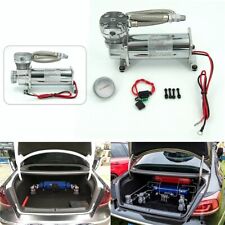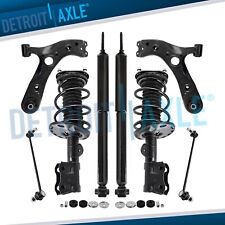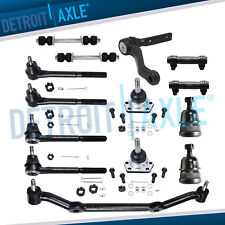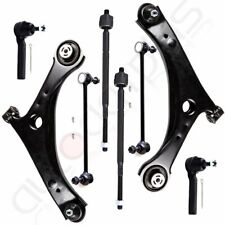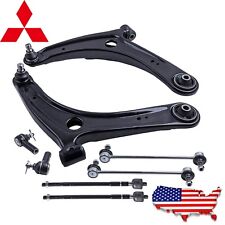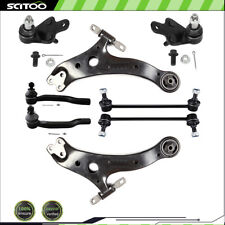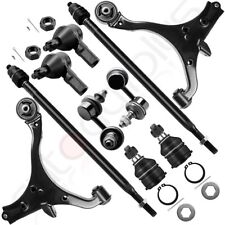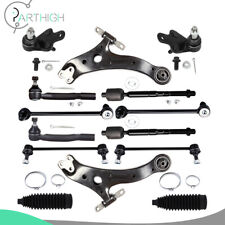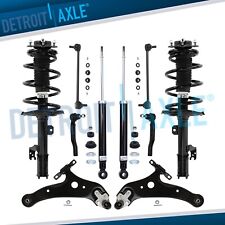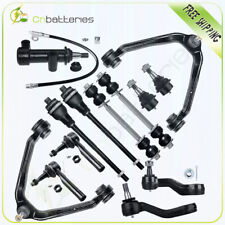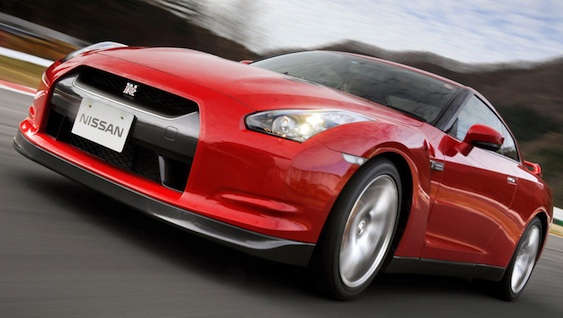2011 Ford F-150 EcoBoost tows maximum load at high speeds around NASCAR track (w/ video)

The 2011 Ford F-150 EcoBoost last week hit up the Homestead-Miami Speedway to demonstrate its durability and best-in-class towing capability. The F-150 EcoBoost racked up 1,606 miles while pulling a trailer with two NASCAR Sprint Cup Ford Fusions weighing 11,300 pounds at full throttle around the site of NASCAR’s Ford 400 season finale.
Click here for more news on the Ford F-150.
The truck circled the 1.5-mile Homestead-Miami Speedway oval at an average speed of 82 mph. It’s the latest test in a series of web-based documentaries to demonstrate the durability of the new 3.5-liter EcoBoost truck engine available in early 2011.
The 2011 Ford F-150 EcoBoost is powered by a 3.5L V6 EcoBoost engine making 365-hp and a best-in-class torque of 420 lb-ft. Sales of the truck begin early 2011.
While at Homestead-Miami Speedway, the 2011 F-150 EcoBoost:
- Turned 1,061 laps
- Compiled 1,606 miles
- Had a fast lap of 99 mph
- Averaged 82 mph
Click here for our original post on the 2011 Ford F-150.
Hit the jump for the video to see a short documentary on the F-150 EcoBoost’s NASCAR Challenge.
2011 Ford F-150:
2011 Ford F-150:
Press Release:
2011 FORD F-150 ECOBOOST TOWS MAXIMUM LOAD AT HIGH SPEEDS AROUND NASCAR RACETRACK
- 2011 Ford F-150 EcoBoost “hero engine” runs for 24 hours at Homestead-Miami Speedway as another demonstration of the durability of the new 3.5-liter EcoBoost truck engine arriving in early 2011
- 2011 Ford F-150 EcoBoost pulls a trailer with two NASCAR Sprint Cup Ford Fusions weighing 11,300 pounds at full throttle around the site of NASCAR’s Ford 400 season finale, Homestead-Miami Speedway’s 1.5-mile oval
- Top speeds of nearly 100 mph were attained, with the 2011 Ford F-150 EcoBoost pounding out average speeds above 80 mph with the fully loaded trailer
- Go to http://www.fordvehicles.com/trucks/f150/2011/experiencef150 to see more on the test as well as videos on how the EcoBoost truck engine endured the equivalent of 150,000 miles of harsh customer use in the dyno lab and worked at a logging camp before the NASCAR test
- Up next is a towing challenge where the 2011 Ford F-150 EcoBoost takes on the best the competition has to offer. Finally, the same EcoBoost truck engine will be raced at the Tecate SCORE Baja 1000
DEARBORN, Mich., Nov. 19, 2010 – The 2011 Ford F-150 EcoBoost recently took a roundabout way to demonstrate durability and best-in-class towing capability.
The new truck/engine combination racked up 1,606 miles towing a best-in-class 11,300 pounds while circling the 1.5-mile Homestead-Miami Speedway oval at an average speed of 82 mph. It’s the latest test in a series of web-based documentaries to demonstrate the durability of the new 3.5-liter EcoBoost truck engine available in early 2011.
EcoBoost is fundamental to Ford’s strategy to provide technologically advanced, high-output, smaller-displacement powertrains that deliver uncompromised performance and fuel economy. EcoBoost engines deliver fuel economy gains of up to 20 percent and reduction of CO2 emissions of up to 15 percent, compared with larger, less-efficient engines.
In addition to turbocharging with direct injection, Ford engineers have enhanced EcoBoost’s technology capabilities by adding variable valve timing and precisely controlling all aspects of the engine. Ford has at least 125 patents on its EcoBoost technology.
The high-speed maximum towing test is the current phase of a testing program that started when this randomly selected EcoBoost engine endured the equivalent of 150,000 miles or 10 years’ use on the dynamometer, replicating the duty cycle of the harshest-use customer.
After the “Dyno Stress” torture testing, the engine was installed into a new 2011 Ford F-150 to work as a log skidder in Oregon, dragging logs weighing up to nearly five tons.
Go to http://www.fordvehicles.com/trucks/f150/2011/experiencef150 to see firsthand how the EcoBoost truck engine performs.
NASCAR Ford Fusions taken for a ride
In this latest demonstration, the 2011 F-150 EcoBoost towed a pair of NASCAR Sprint Cup Ford Fusions, each weighing 3,450 pounds, plus additional weight to reach maximum capacity. The truck and trailer ran for 24 hours, stopping only for fuel, driver changes, to check temperatures, inspect truck tires and replace trailer tires.
The EcoBoost powered the truck and fully loaded trailer to top speeds approaching 100 mph on the straightaways, with average lap speeds above 80 mph. The engine utilized its maximum horsepower of 365 and its maximum best-in-class torque of 420 lb.-ft. several times each lap – with regular 87 octane fuel.
Consider that last year’s pole speed for the season-ending Ford 400 NASCAR Sprint Cup race at Homestead-Miami Speedway was about 174 mph. The 2011 F-150 EcoBoost pushed to near 100 mph with a truck and trailer combined weight that is more than three times heavier than a Sprint Cup car.
“The engine and the truck performed flawlessly,” said Eric Kuehn, chief engineer of the 2011 Ford F-150. “These demonstrations reinforce that every engine we put under the hood of a Ford F-Series has to pass all of our Built Ford Tough testing – and pass it readily.”
Of particular importance to maximum towing customers is the performance of the stock turbochargers and cooling systems tested during this demonstration.
“The twin turbochargers were pushed to the absolute limit multiple times every single lap with no problems whatsoever,” said Kuehn. “The stock cooling systems were outstanding as well. The engine coolant, transmission temperatures and oil temperatures ran at or below where we expected throughout the entire test.”
Trailer sway control helps keep maximum load under control
In addition to demonstrating the performance of the 3.5-liter EcoBoost, the Homestead-Miami track also proved to be a showcase for standard trailer sway control. Even with strong wind gusts combined with variable banking of 18 to 20 degrees in the turns, trailer sway control helped keep the maximum load under control.
Trailer sway control works in conjunction with AdvanceTrac® with RSC® (Roll Stability Control) to determine if a trailer is swaying and takes immediate measures to help the driver bring the vehicle and trailer under control. The system is automated and requires no driver interaction.
“The 2011 F-150 EcoBoost tows the most and does it with a trailer sway control system unmatched by anyone else,” said Kuehn. “Pulling an 11,300-pound trailer at 100 mph on steep banking in a strong wind is an extreme condition well beyond what a customer would experience, but the 2011 F-150 EcoBoost handled everything with ease.”
The 2011 F-150 EcoBoost will be available in early 2011.
Ford truck leadership continues
Ford F-Series is the best-selling vehicle (for 28 years straight) and the best-selling and most-awarded pickup truck (for 33 years straight) in America. Here are some of the recent awards for Ford F-Series trucks:
2011 Super Duty
- Ward’s Best Engine: 6.7-liter Power Stroke® diesel
- Pickuptrucks.com Best Engine: 6.2-liter gas
- ALG Residual Value
- Kelley Blue Book Residual Value
- Truck Line of Texas
2011 F-150
- Consumer Digest Best Buy
2010 F-150 has won more than 35 awards. Here are a few of them:
- First in kbb.com’s First to Worst Full-Size Pickup
- Truck of Texas
- Truck Line of Texas
- Consumer Digest Best Buy
- ALG Residual Value
- Petersen’s 4Wheeler 4×4 of the Year: Raptor
- Popular Mechanics Best Off-Road: Raptor
– By: Omar Rana






